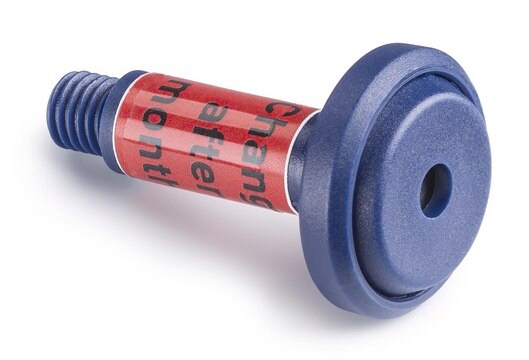1.06462
Sodium hydroxide
pellets EMPLURA®
Synonym(s):
‘Caustic soda’
About This Item
Recommended Products
vapor density
>1 (vs air)
Quality Level
vapor pressure
<18 mmHg ( 20 °C)
3 mmHg ( 37 °C)
product line
EMPLURA®
Assay
≥97% (NaOH, acidimetric)
form
pellets
technique(s)
cell culture | stem cell: suitable
pH
>14 (20 °C, 100 g/L in H2O)
mp
318 °C (lit.)
solubility
1090 g/L
density
2.13 g/mL at 20 °C
anion traces
carbonate (as Na2CO3): ≤1%
chloride (Cl-): ≤0.012%
sulfate (SO42-): ≤0.01%
cation traces
Al: ≤0.002%
Fe: ≤0.002%
heavy metals (as Pb): ≤0.002%
storage temp.
2-30°C
SMILES string
[OH-].[Na+]
InChI
1S/Na.H2O/h;1H2/q+1;/p-1
InChI key
HEMHJVSKTPXQMS-UHFFFAOYSA-M
Looking for similar products? Visit Product Comparison Guide
Related Categories
Application
- Improvement of durability and drying shrinkage of sodium carbonate activated slag through the incorporation of calcium hydroxide and sodium hydroxide.: This study investigates the effects of incorporating sodium hydroxide and calcium hydroxide into sodium carbonate activated slag. The results show significant improvements in the durability and drying shrinkage properties of the material, making it a viable option for construction applications where enhanced performance is required (Construction and Building Materials, 2020).
- Effect of Sodium Silicate to Hydroxide Ratio and Sodium Hydroxide Concentration on the Physico-Mechanical Properties of Geopolymer Binders.: This study investigates the influence of the sodium silicate to sodium hydroxide ratio and the concentration of sodium hydroxide on the mechanical properties of metakaolin-based geopolymer binders. The results indicate that both the ratio and concentration significantly affect the compressive and flexural strength of the binders, providing valuable insights for optimizing geopolymer formulations (East African Journal of Engineering, 2023).
- Effect of Sodium Hydroxide, Liquid Sodium Silicate, Calcium Hydroxide, and Slag on the Mechanical Properties and Mineral Crystal Structure Evolution of Polymer Materials.: This research examines the roles of sodium hydroxide, liquid sodium silicate, calcium hydroxide, and slag in the development of mechanical properties and mineral crystal structures in polymer materials. The study reveals that sodium hydroxide is essential for creating a strongly alkaline environment that promotes the formation of beneficial mineral crystals, thereby enhancing the compressive strength of the materials (Crystals, 2021).
- Effects of Sodium Hydroxide and Calcium Hydroxide on the Phase Equilibria of Methane Hydrates.: This study explores the impact of sodium hydroxide and calcium hydroxide on the phase equilibria of methane hydrates. The findings provide insights into how these compounds influence hydrate stability and formation, which is critical for applications in natural gas storage and transportation (SSRN Electronic Journal, 2022).
Linkage
Analysis Note
Carbonate (as Na₂CO₃): ≤ 1.0 %
Chloride (Cl): ≤ 0.012 %
Sulfate (SO₄): ≤ 0.01 %
Heavy metals (as Pb): ≤ 0.002 %
Al (Aluminium): ≤ 0.002 %
Fe (Iron): ≤ 0.002 %
Legal Information
Signal Word
Danger
Hazard Statements
Precautionary Statements
Hazard Classifications
Eye Dam. 1 - Met. Corr. 1 - Skin Corr. 1A
Storage Class Code
8A - Combustible, corrosive hazardous materials
WGK
WGK 1
Flash Point(F)
Not applicable
Flash Point(C)
Not applicable
Certificates of Analysis (COA)
Search for Certificates of Analysis (COA) by entering the products Lot/Batch Number. Lot and Batch Numbers can be found on a product’s label following the words ‘Lot’ or ‘Batch’.
Already Own This Product?
Find documentation for the products that you have recently purchased in the Document Library.
Customers Also Viewed
Our team of scientists has experience in all areas of research including Life Science, Material Science, Chemical Synthesis, Chromatography, Analytical and many others.
Contact Technical Service





